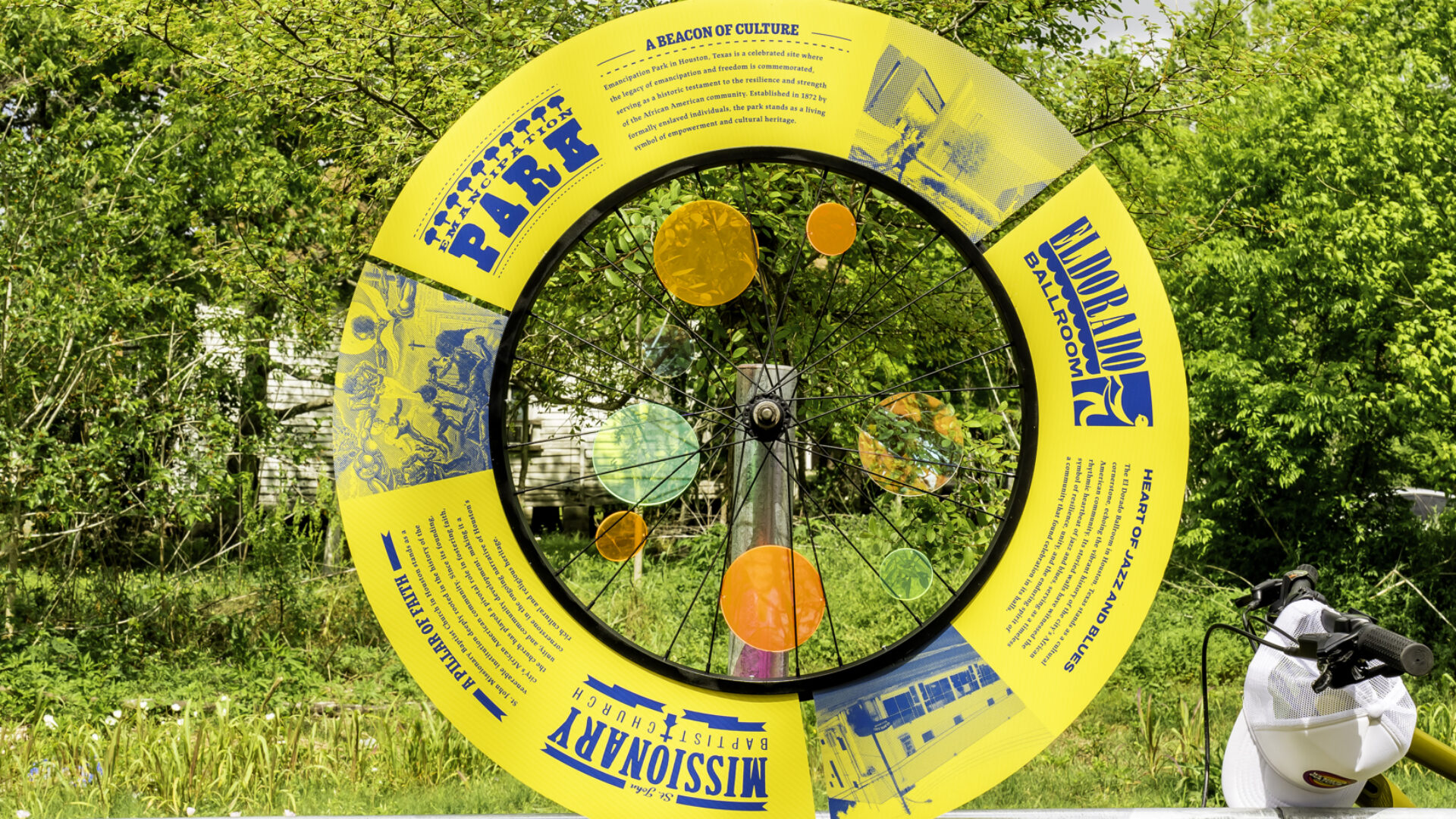On Tap: The Columbia Tap Trail
On TAP was a community-engaged and interdisciplinary collaboration between students and faculty at the University of Houston Kathrine G. McGovern College of the Arts and the Gerald D. Hines College of Architecture and Design and community organizations and stakeholders in Houston’s Third Ward and East End. On TAP focused on the Columbia Tap Trail a historic rail corridor that begins in East Downtown and travels south through the Third Ward, terminating at State Highway 288 and connecting with the Brays Bayou Greenway. This corridor is a vital historic and cultural asset for the Third Ward, offering the potential to foster connectivity among neighborhoods while promoting well-being and active living.
Agency
University of Houston, Graphic Design, School of Art and Gerald D. Hines College of Architecture and Design
Practice Area
Client
Friends of Columbia Tap
Industry

Background
Originally part of the Houston Tap and Brazoria Railway chartered in 1856, the rail line was built to transport sugar and cotton from the plantations of Brazoria County to the Port of Houston, and later to transport Black convict lease laborers to those same plantations. The railway was abandoned in 1985. More than two decades later, in 2009, a four-mile section was converted into a rail-trail, now known as the Columbia Tap Trail.
On TAP was a temporary, site-specific project for Columbia Tap Trail that focused on interpreting the history, economy, resilience, culture, and community values of the Third Ward. The project engaged with historic sites, neighborhoods, hike/bike trails, and green spaces. Seven teams were formed, comprised of a total of 24 senior graphic design students from the Kathrine G. McGovern School of Art’s Graphic Design Program and 14 fourth- and fifth-year students from the Gerald D. Hines College of Architecture and Design. Each team selected a site along the trail to create interactive installations. These installations were designed to engage the public and surrounding communities during the Third Annual Third Ward On TAP event, raising awareness of the trail and its potential amenities.
The Challenge
Accurate content was critical to the project’s success and relied heavily on the expertise of community stakeholders, as well as the students’ in-depth research into the history and evolving needs of the neighborhoods. With 36 students working along a four-mile corridor, coordinating logistics posed a significant challenge—requiring the organization of site visits, assessment of site conditions, and management of fabrication and installation complexities—all while ensuring that each installation remained contextually appropriate and meaningful.
Project Vision
The On Tap event and installations supported the broader community effort to enhance the Columbia Tap Trail while celebrating its rich history and cultural heritage. Serving as a catalyst, the event marked a small but meaningful step toward continued advocacy for trail improvements and public investment.
For students, the project offered an immersive introduction to the power of site-specific design and storytelling—tools for uncovering hidden histories, creating inclusive public spaces, expanding access to recreation and nature, and bridging divides between neighborhoods. Through active participation in community and stakeholder meetings, students gained firsthand experience with the complexities of community-based work. Along the way, they honed essential skills in site-specific research, proposal development, design, fabrication, installation, and public engagement within the built environment.
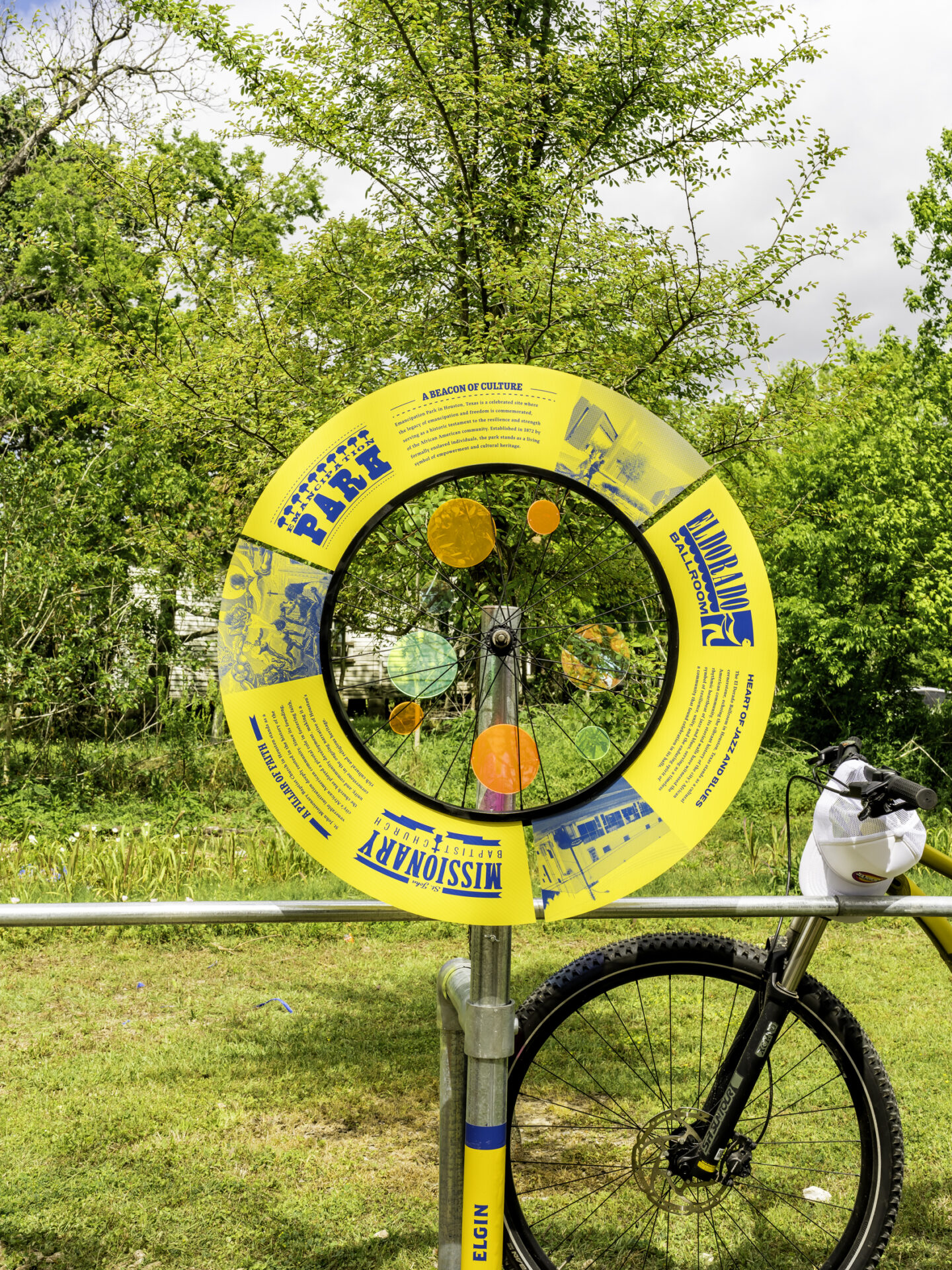
Jeff Stark
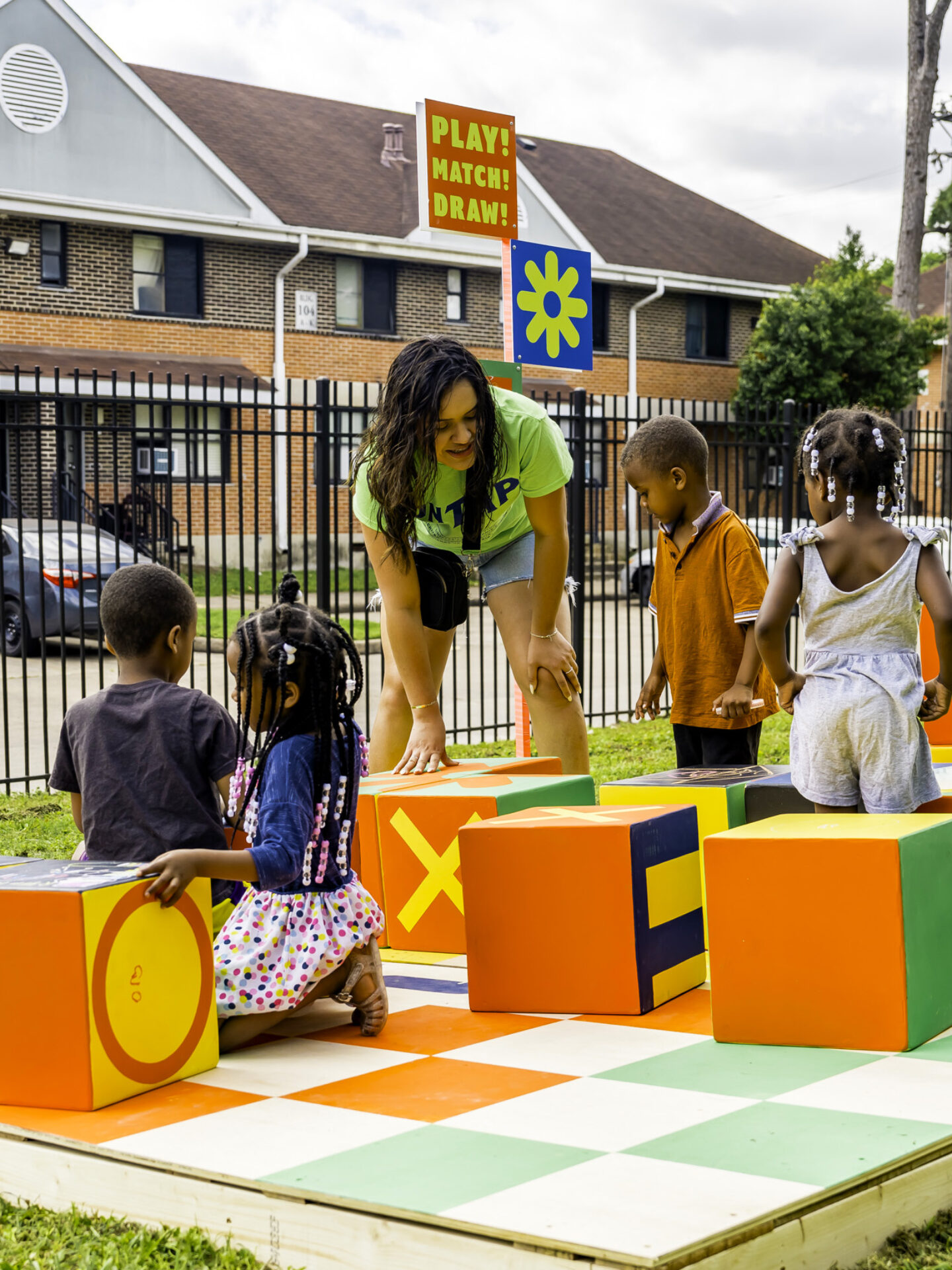
Play celebrates the potential for providing activities for children on the CTT
Cheryl Beckett
Design + Execution
Student teams developed proposals, presenting them to faculty and stakeholders. Messaging was continuously refined throughout the process, while models and material tests underwent numerous iterations. The Beacon team led the project branding efforts, collaborating with the teams to create a cohesive language of color and iconography, while still preserving team autonomy.
Student teams developed proposals, presenting them to faculty and stakeholders. Messaging was continuously refined throughout the process, while models and material tests underwent numerous iterations. The beacon team was in charge of the project branding and worked with the teams to make a cohesive language of color and iconography while still allowing for team autonomy.

The wayfinding beacons along the trail indicate each of the six On Tap installations.
Jeff Stark
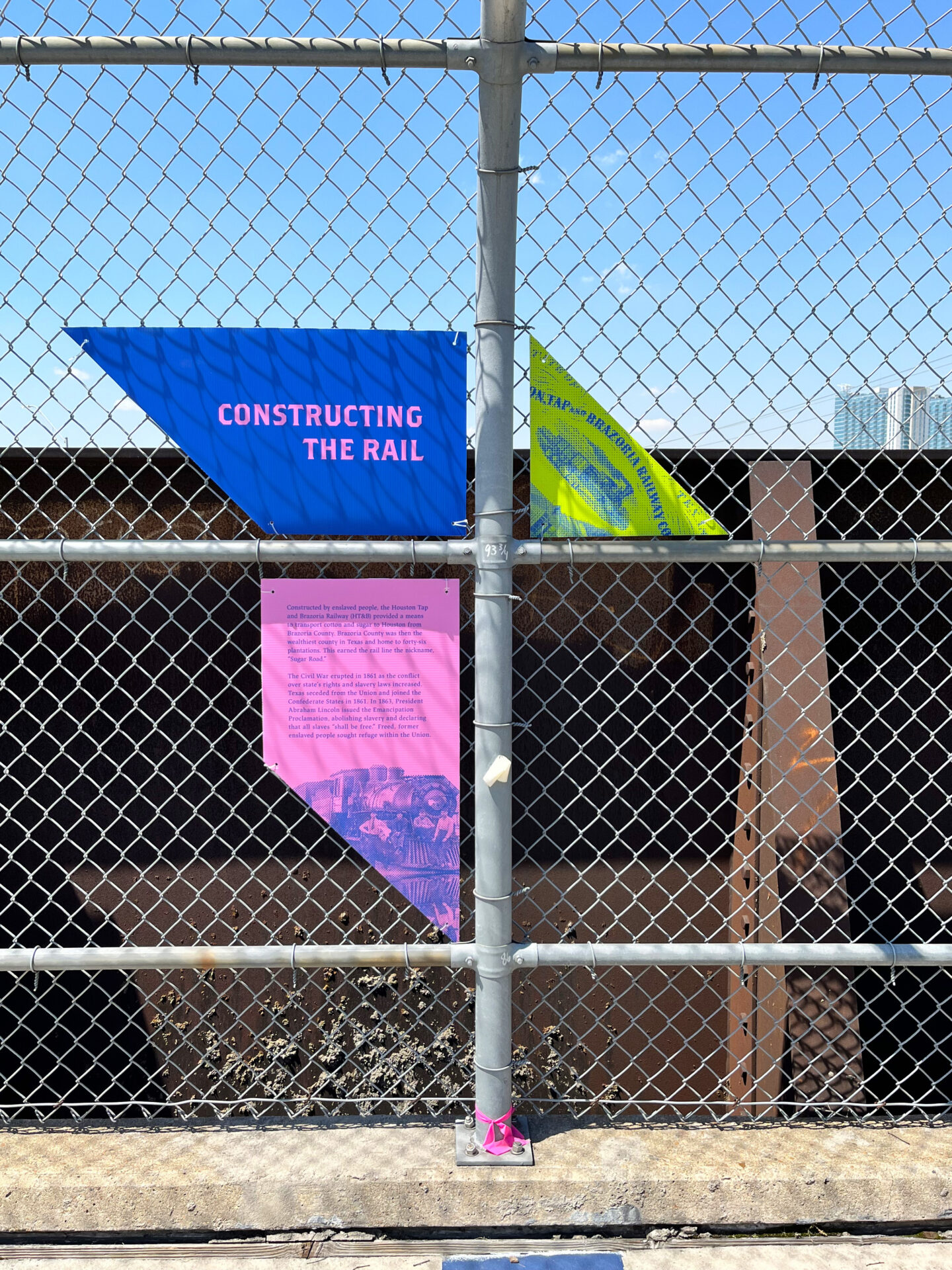
The pedestrianized bridge over 288 is the trailhead and provides a more in-depth history of Columbia Tap along its length. The fencing is a key component for installation.
Cheryl Beckett
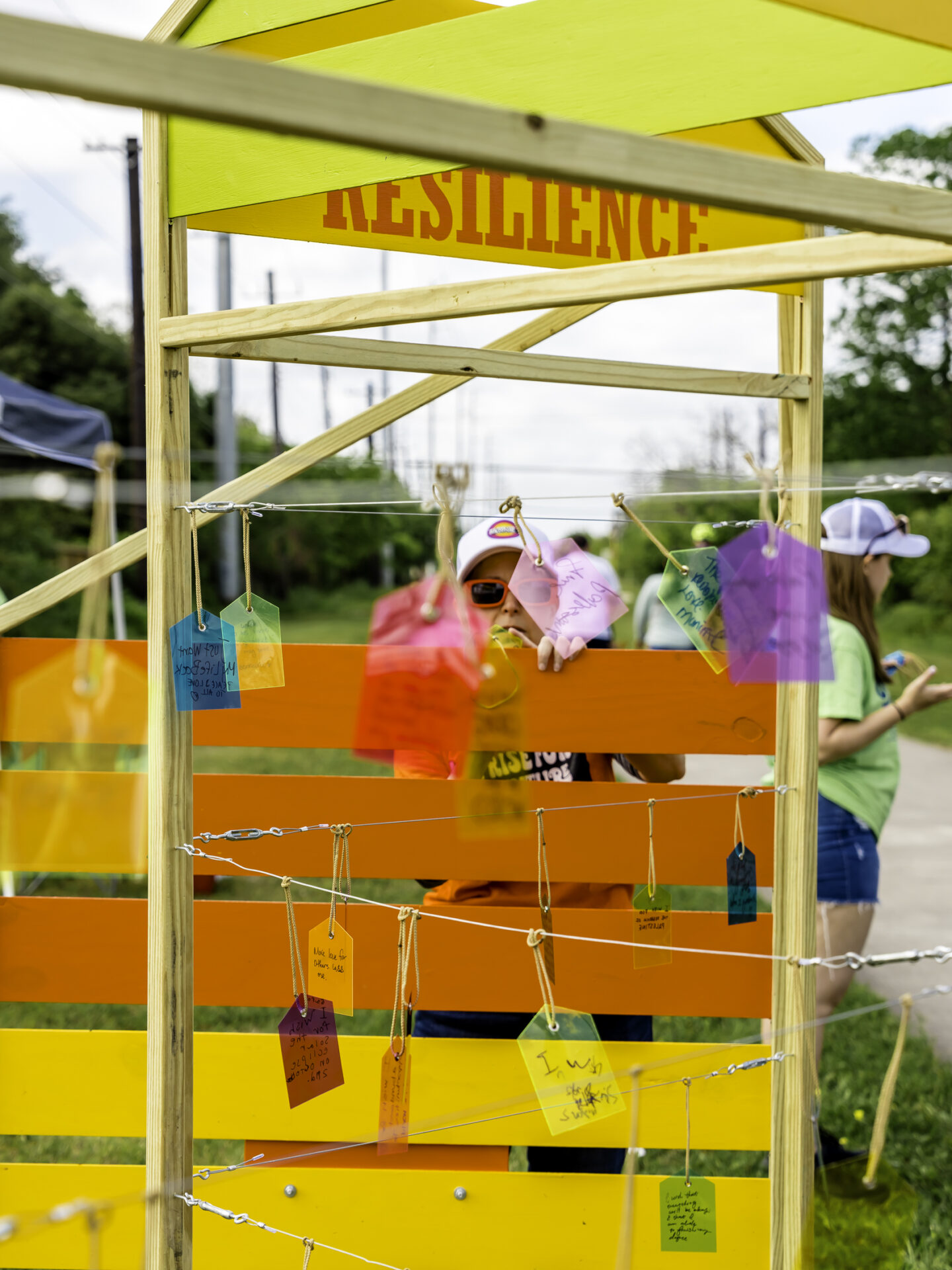
Participants write their hopes for the trail on mini-acrylic tags shaped like houses on the Home of Wishes
Jeff Stark
Sustainability
Recycled materials, such as bicycle wheels, were used whenever possible. As a class, we visited the Houston Recycle Warehouse, and students returned regularly as material needs emerged.
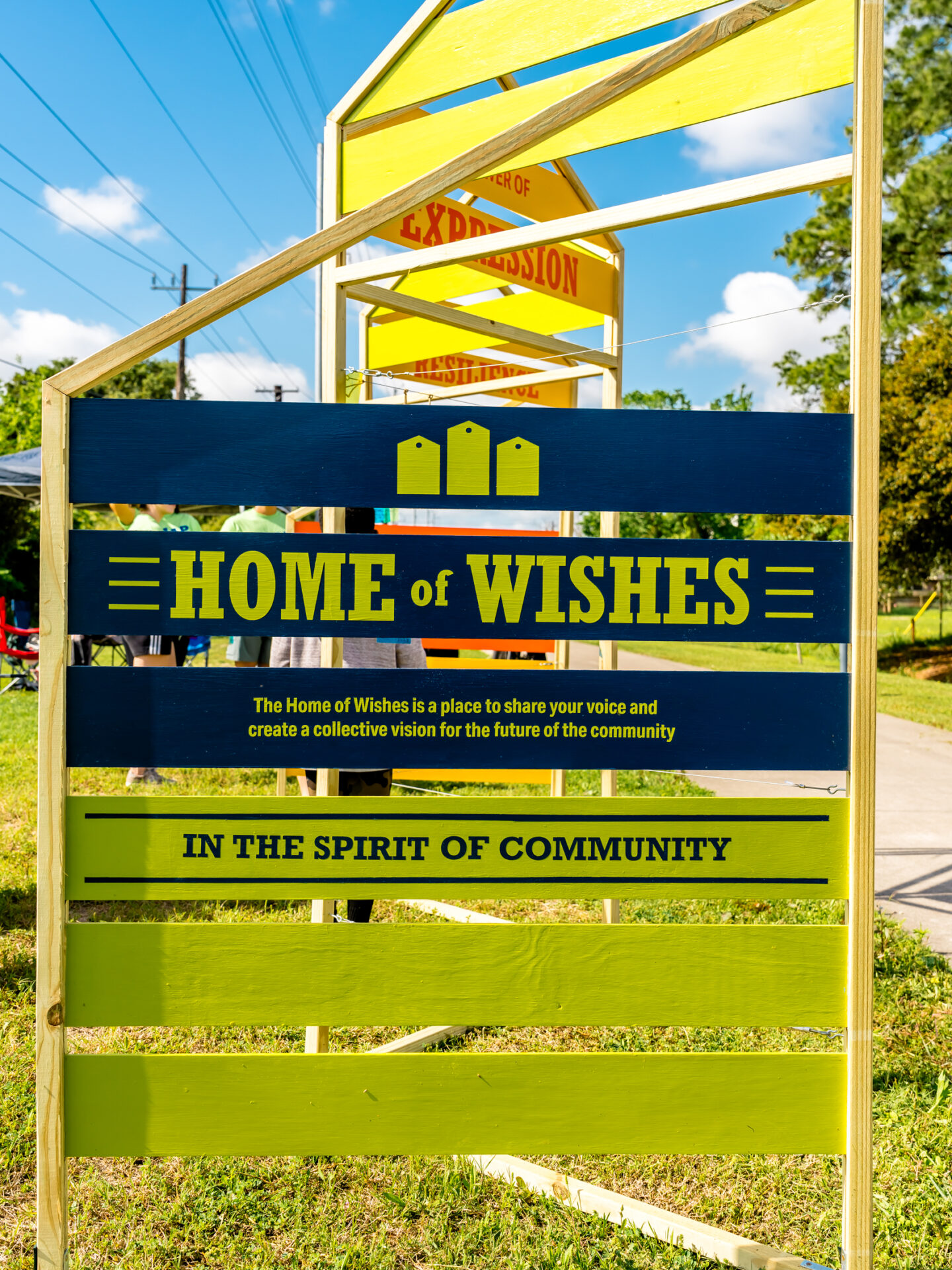
Home of Wishes reinforces the strength of the neighborhood with a phrase in each “roof” peak based on the power of…..connection, engagement, unity, expression, resilience and inclusivity.
Jeff Stark

Project Details
Hats off to this student group. The level of thought, care about form and color, and even physical building are off the charts for any student effort. Could I have done this myself as a student? Doubtful!
This project tackles a challenging story in an interactive and engaging fashion. The use of bike wheels to tell this important story on the bike path is clever and fun. This project represents the best of student collaboration to produce an outcome that is tangible and implemented.
Design Team
Student Team 1: Diana Cao, Brissa Estrada, Emma Matocha, Amber Quinn, Calo Penedo Silva
Student Team 2: Samah Hassan, Widad Hayali, Rochelle Matus, Yanci Ramirez, Ana Tejeda
Student Team 3: J Dylan Burkett, Christian Barrera, Kai Wen Chua, TJ Jordan, Zoe Schomburg
Student Team 4: Joan Ku, Natalia Marmolejo, Daniel Sabillon, Adam Smith, Nina Torres
Student Team 5: Ashley Guzman, Julissa Herrera, Sarah Jordan, Hannah McCreary, Andrew Thai
Student Team 6: Natalie Costello, Alex Crow, Luis V. Matson, Cindy Muñoz, Yebin Song
Student Team 7: Catherine Cantú, Tanner Hodgkinson, Saray Mata, Esther Par, Jose Romero, Gerald Sastra
Collaborators
Susan Rogers, (associate professor, University of Houston)
Gerald D. Hines (College of Architecture and Design and Director of the CDRC (Community Design Resource Center)
Cheryl Beckett (associate professor, University of Houston, School of Art, program coordinator)
Photo Credits
Jeff Stark at Digital, students, faculty and students
Open Date
March 2024
More in Public Installation
All Projects-
Read more The Hive

The Hive
The Urban Conga -
Read more Carousel for Companionship
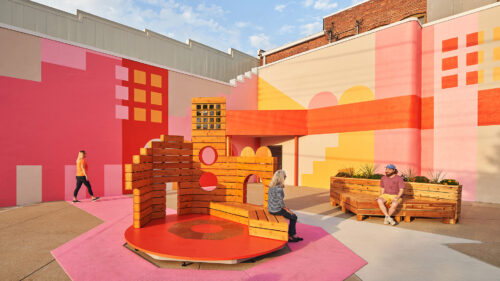
Carousel for Companionship
Could Be Design -
Read more Washington School for the Deaf Art Gate
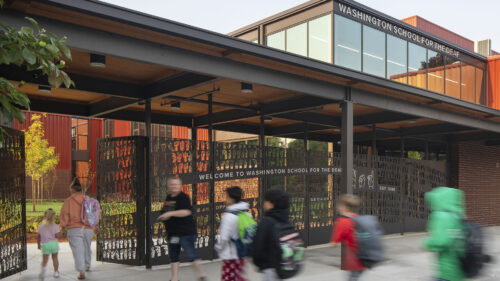
Washington School for the Deaf Art Gate
Mayer/Reed, Inc. -
Read more Monticello Burial Ground for Enslaved Persons / Contemplative Site
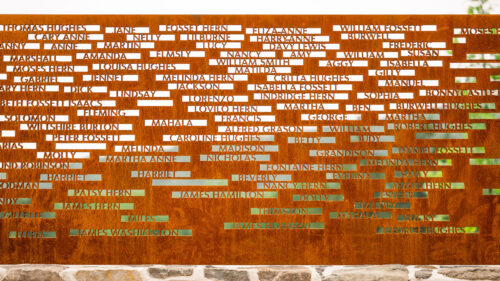
Monticello Burial Ground for Enslaved Persons / Contemplative Site
HGA
